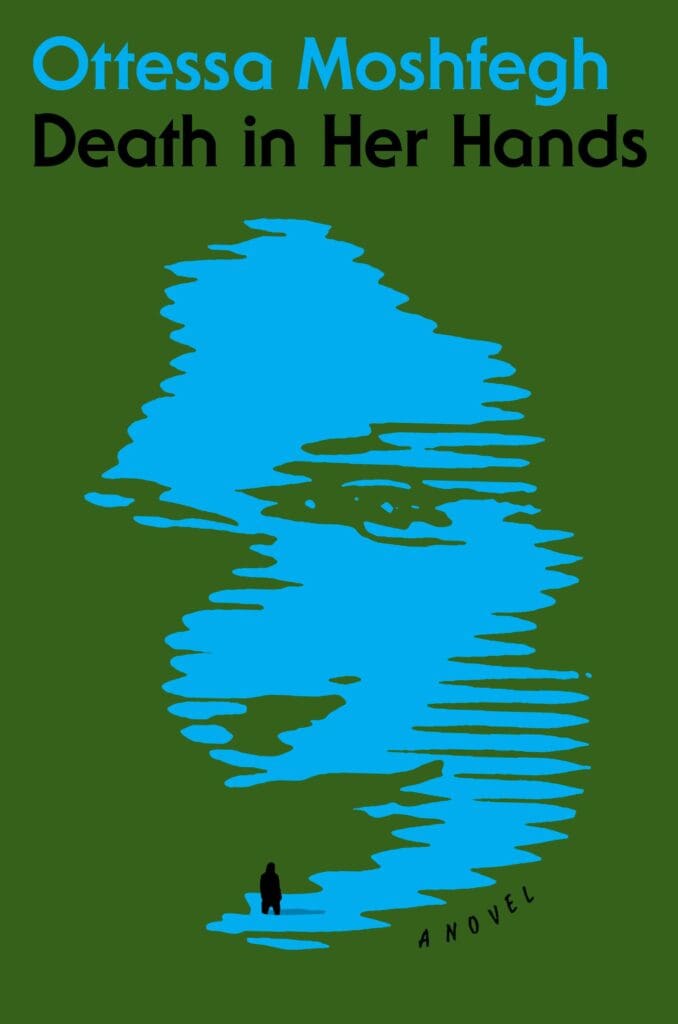Under normal circumstances, the literary world would likely be abuzz over Death in Her Hands (259 pages; Penguin Press), the latest novel by Ottessa Moshfegh, one of the few writers of her generation who could be said to have “made it”—if we want to define that as a certain level of name recognition, lengthy book tours with celebrity moderators, and, more importantly, a style that is decidedly her own. Pick up a book by Moshfegh and you might have some idea of what to expect: unreliable-verging-on-unlikable female narrators, a smattering of gross-out details regarding characters’ bodily functions, and a tone that is so severe and unsentimental as to make most contemporary fiction read like self-help books (Moshfegh’s protagonists would fix Sally Rooney’s Normal People with an icy death stare while silently judging their body fat percentages). Of course, these are not normal circumstances, but that’s alright—Moshfegh’s popularity is not a passing phase—and part of the pleasure of Death in Her Hands in Her Hands, her finest novel yet, is the way it both reinforces and subverts those same expectations.
This is a story of obsession. On the opening page, our narrator—a 72- year-old widow living in isolation somewhere in the Northeast United States—stumbles upon a note in the woods while taking her dog for a walk. The note reads, simply: Her name was Magda. Nobody will ever know who killed her. It wasn’t me. Here is her body. Only, there is no body, and our narrator Vesta is left to puzzle over Magda’s fate. It’s a simple conceit, but one that snares its hooks in the reader from the get go, and sustains the novel until its grim denouement.
Naturally, the reader—much like Vesta herself—will begin searching for clues as to the identity of the murderer and their motive, but life is not an Agatha Christie page-turner (Moshfegh herself is clearly having fun with the tropes; at one point Vesta cracks, “Mystery was an artless genre, that much was obvious”), and Vesta’s investigation returns more questions than answers. Soon, Magda—or at least Vesta’s idea of her—begins to dominate the real estate in Vesta’s self-dubbed “mindspace,” in a way that’s very much like a writer fixating on the the details of a character they’ve created: “Her hair, splayed across the forest floor, would be damp by now, full of dead leaves and detritus, but I imagined it would still look glossy, vibrant…’Magda,’ I clucked to myself. A pity you had to die. What a dumb, cruel world.”
Vesta lives in a small, mostly rural and working- class town, and rarely ventures forth from her cabin, thus her interactions with other characters are few and far between; meaning most of Death in Her Hands unfolds through Vesta’s internal dialogue, giving the entire novel the feeling of an extended monologue, something a skilled actor could perform onstage and hold an audience rapt; and as Vesta conjectures the tragic details of Magda’s life, she is really telling us about herself, laying her soul bare on the page, even if she often fails to realize it. The sad truth of her life begins to slip through the cracks: her troubled marriage with her domineering (and philandering) husband, a well-respected academic; the hopes she once held for herself during her younger days; and her somewhat neglectful relationship with her sole companion, Charlie the dog.
The frequently harsh and grotesque nature of Moshfegh’s writing has drawn comparisons to Flannery O’Connor, a reference Moshfegh herself rejects; she has cited Vladimir Nobakov as a more accurate influence, and his spirit is here, from the playfulness with language (it’s no coincidence “Vesta” and “Magda” sound so much alike), and the intense, closely told account of a narrator whose sanity we may at times call into question. There is even something of Humbert Humbert’s obsession with Lolita in the way Vesta fetishizes the incidental details of Magda’s life (“Magda in her dirty tennis shoes…chewing Bazooka gum”), though we sense Vesta’s preoccupation arises not out of sexual perversion but a bitter lament for her own girlhood long since vanished into the ether.
Moshfegh’s novels are open deceptions; they gleam with noir and genre surfaces, a clever (and marketable) camouflage which the author utilizes to conceal her misanthropic musings on life, death, and the often brutal gap between: “What a strange responsibility it was, to hold someone’s death in your hands. Death seemed fragile, like crumpled paper, a thousand years old…Life wasn’t like that. Life was robust. It was stubborn. Life took so much to ruin. One had to beat it out of the body.” There is something prickly and unpleasant about Moshfegh’s writing, but in a cultural moment where it often feels like American fiction must be safe and aspirational—or else—it also feels refreshingly honest. There are caveats: the narrators of each of her novels have expressed a persistent and distracting tendency to body-shame overweight people, which hardly seems like a coincidence after three books. Perhaps Death in Her Hands can be excused as it was reportedly completed before the publication of her second book, 2018’s My Year of Rest and Relaxation. The “new” novel does have the aura of something that has been placed in a drawer and left to fester—shadowed in gloom, like the desiccated body of a small animal Vesta might find in the birch woods near her cabin. Hardly what you’d call “light reading” for a summer where most of us have been living in some form of isolation, to be sure, but arguably a dark antidote to the complacency of much mainstream fiction.

